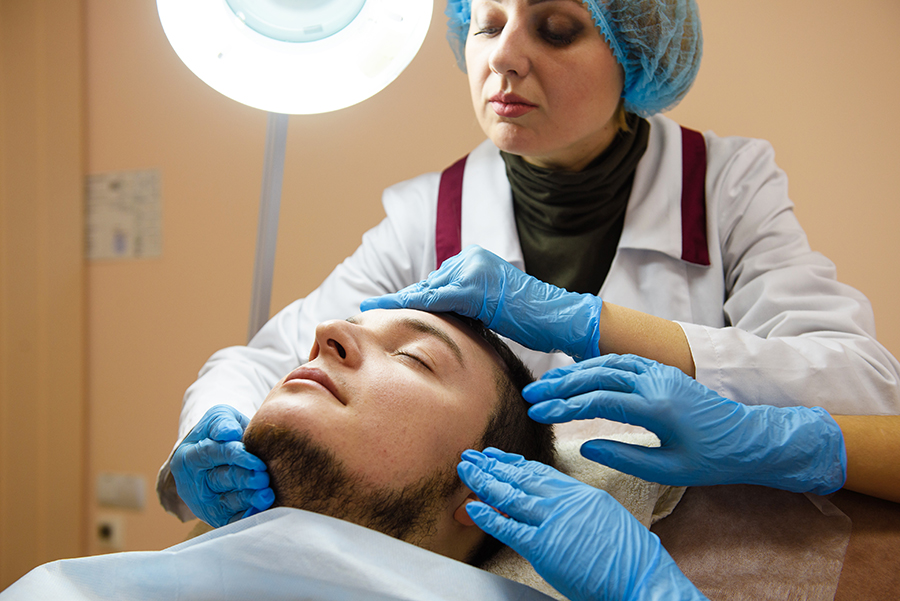A hair transplant can give you permanent, natural-looking results
If you're looking for a permanent solution to your hair loss, you may want to consider a hair transplant

Improvements in creating the hairline and placing the hairs in the thinning areas also help create natural-looking results.
Thanks to these advances, the results can look so natural that a barber or stylist cannot tell you’ve had anything done.
Results depend largely on the surgeon you select
While these advances are giving patients natural-looking results, the outcome still depends largely on the surgeon you select. You want to choose a doctor who understands hair loss and performs hair transplants regularly.
Dermatologists specialize in conditions that affect our skin, hair, and nails, so they know a lot about hair loss. Many also perform hair transplants and can tell you whether you are a good candidate for a hair transplant.
Who is a good candidate for a hair transplant?

To be considered for a hair transplant, you need two things:
Enough healthy hair on your scalp that can be transplanted to the area that needs hair
The ability to grow hair on the thinning area of your scalp
During a consultation with a dermatologist, you can find out if you have both. A dermatologist will give you a thorough scalp exam.
To find out why you have hair loss, you may also need a blood test. This can check for things going on in your body that may be causing your hair loss. Some patients need a procedure called a scalp biopsy. Your dermatologist can quickly and easily take what is needed for the scalp biopsy during the consultation.
If the exam and tests show that you are a good candidate for a hair transplant, your dermatologist can tell you what results you can expect. A full head of hair may be unrealistic, but a fuller head of hair can be the goal.
What happens during a hair transplant?
You can expect a hair transplant to take between four and eight hours. If you are having a large amount of hair transplanted, you may need to return for a few hours the next day.
Most patients remain awake during the entire surgery and need only an anesthesia that makes the scalp numb. Some patients also take a mild sedative to help them relax.

The second option takes a lot more time, but avoids leaving a long, narrow scar on your scalp. This can be beneficial if you prefer close-shaven haircuts like buzz cuts.
Before the surgeon can transplant the hairs, technicians need to prep the removed hairs and the surgeon must get your scalp ready for the transplant.
Depending on the number of hairs to be transplanted, two to three members of the hair transplant team may help place the healthy hairs into the area that needs hair. Once all the hairs have been transplanted, your scalp will be bandaged and you will be given instructions for at-home care.
When do patients see results from a hair transplant?
Most patients see results between six and nine months after surgery. For some patients, it takes 12 months.
It’s important to know that between two and eight weeks after the surgery, the transplanted hair will fall out. This is normal. By the third month, the hair may look thinner than before you had the transplant. Again, this is normal.
Medicine can help you keep the results
To get the best results from a hair transplant, your dermatologist may recommend medicine that treats hair loss. Medicine helps because hair loss and thinning can continue, even after a hair transplant.
Medicine can prevent or slow down new hair loss and thinning. By doing that, you can keep your natural-looking results for years to come.
Related AAD resources
Images
Getty Images
References
Gupta AK, Danika CA et al. “Progression of surgical hair restoration techniques.” J Cutan Med Surg. 2015 Jan-Feb;28(1):17-21.
Rogers NE, “Hair transplant update.” Semin Cutan Med Surg. 2015 Jun;34:89-94.
 Atopic dermatitis: More FDA-approved treatments
Atopic dermatitis: More FDA-approved treatments
 Biosimilars: 14 FAQs
Biosimilars: 14 FAQs
 How to trim your nails
How to trim your nails
 Relieve uncontrollably itchy skin
Relieve uncontrollably itchy skin
 Fade dark spots
Fade dark spots
 Untreatable razor bumps or acne?
Untreatable razor bumps or acne?
 Tattoo removal
Tattoo removal
 Scar treatment
Scar treatment
 Free materials to help raise skin cancer awareness
Free materials to help raise skin cancer awareness
 Dermatologist-approved lesson plans, activities you can use
Dermatologist-approved lesson plans, activities you can use
 Find a Dermatologist
Find a Dermatologist
 What is a dermatologist?
What is a dermatologist?